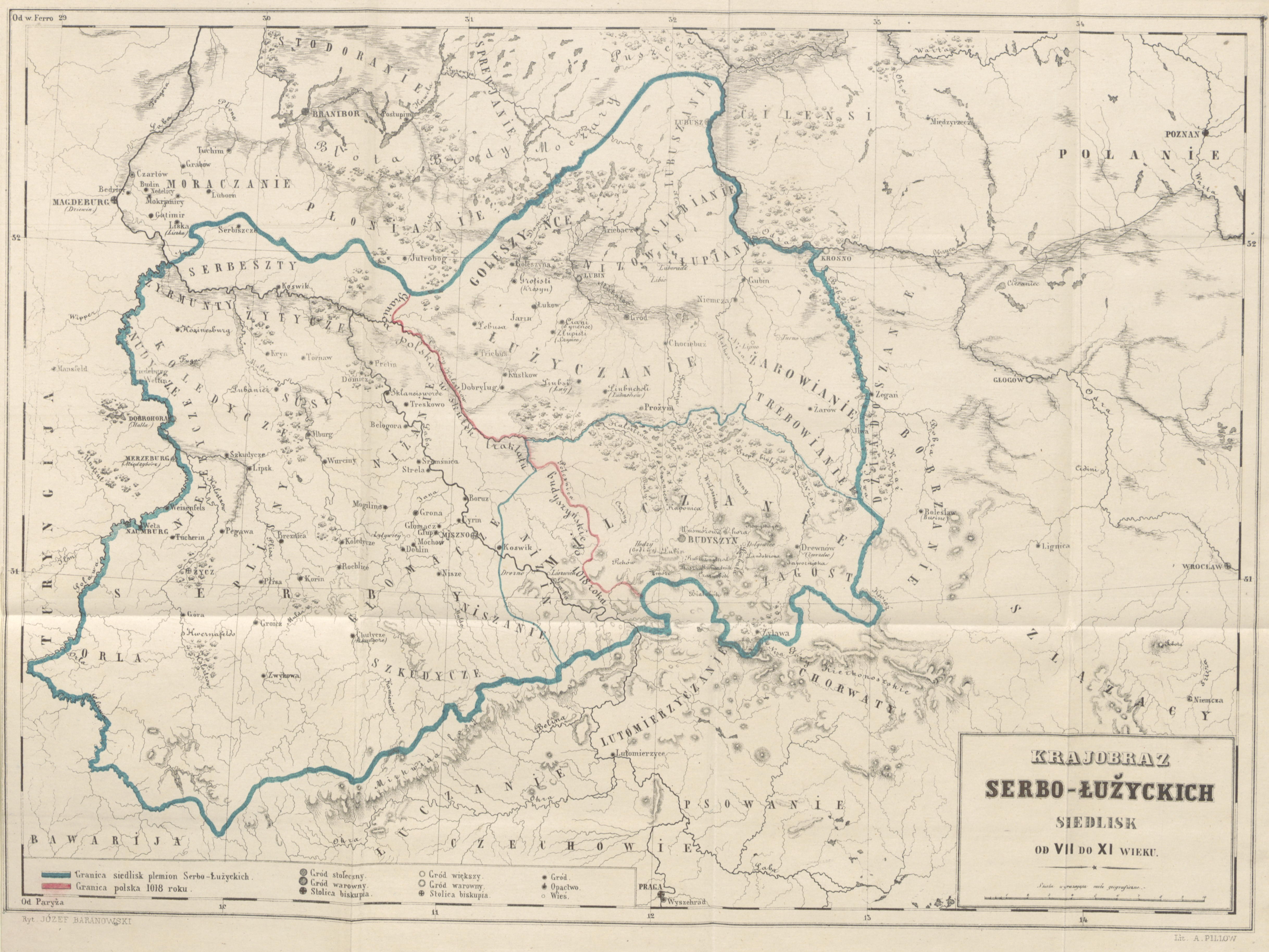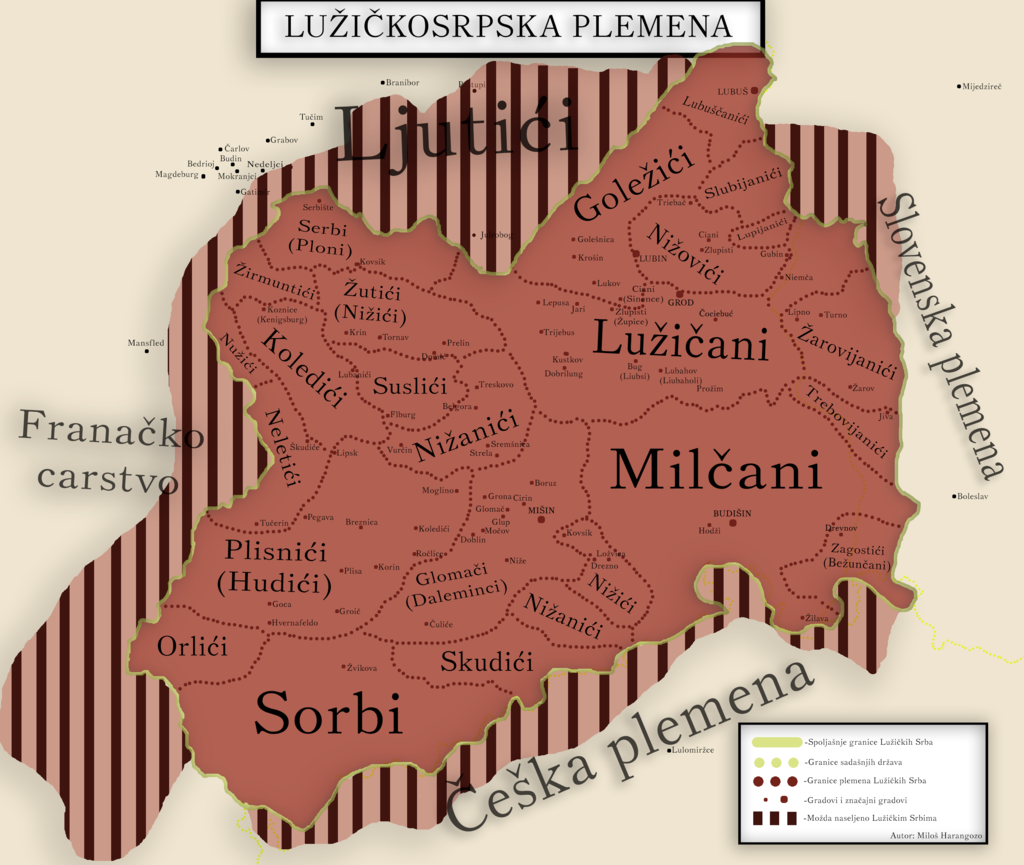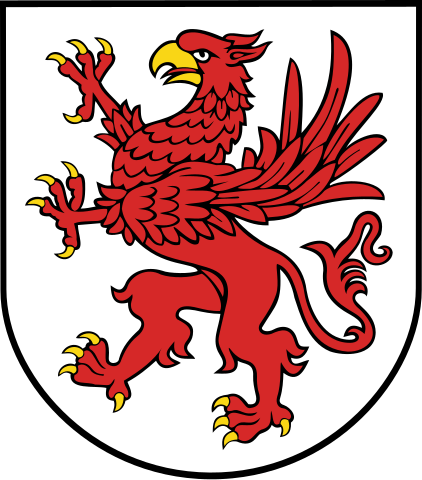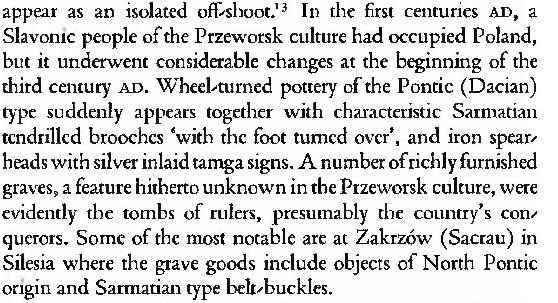
Srednji vek

- Posts : 11763
Join date : 2014-10-27
Location : kraljevski vinogradi
- Post n°252
 Re: Srednji vek
Re: Srednji vek
Što smo ono bješe otjerali Zupicu, previše srao, šta?
_____
Ha rendelkezésre áll a szükséges pénz, a vége általában jó.

- Posts : 11623
Join date : 2018-03-03
Age : 36
Location : Hotline Rakovica
- Post n°253
 Re: Srednji vek
Re: Srednji vek
Tračanski konjanik ubiva aždahu nešto!



Ajde, Zupo, odjebi s tim. Nismo mi nikakvi kurci na konjima.



Ajde, Zupo, odjebi s tim. Nismo mi nikakvi kurci na konjima.
_____
Sve čega ima na filmu, rekao sam, ima i na Zlatiboru.
~~~~~
Ne dajte da vas prevare! Sačuvajte svoje pojene!

- Posts : 15551
Join date : 2016-03-28
- Post n°255
 Re: Srednji vek
Re: Srednji vek
Mozda zuper hoce da Kaze da smo kao moderni Egipćani,narod koji samo nosi ime predhodnog koji je nestaoMór Thököly wrote:Nije ovo glupost sve sto pise, pisao je František Dvornik o tome. Jedino ne znam koja bi trebalo da bude krajnja poenta... Mislim, ti stepski narodi su 1, a Tatari nesto sasvim 2.
_____
Što se ostaloga tiče, smatram da Zapad treba razoriti
Jedini proleter Burundija
Pristalica krvne osvete

- Posts : 168
Join date : 2020-09-08
- Post n°256
 Re: Srednji vek
Re: Srednji vek
Што се тиле досељавања Срба на Балкан, Дворник лепо описује догађаје,
The Slavs: Their Early History and Civilization
Francis Dvornik
A lively discussion is still going on among specialists about the extent of Samo’s empire. Probably it comprised Moravia, Bohemia, Lower Austria and, from 631 onwards, White Serbia also. It is most unlikely that Samo’s power extended as far as Carinthia, as is often supposed.
We read in the chronicle of Fredegar that Dagobert, King of the Franks (628-638), and the Emperor Heraclius (610-641) exchanged embassies and concluded a treaty of friendship. These negotiations are dated by the chronicler in the years 626 and 629, but may have been started earlier. The treaty could have been directed only against the common enemy — the Avars.
2
Most probably about the same time, a section of the Serbs migrated from White Serbia — according to Constantine Porphyrogennetus — and asked Heraclius for permission to settle on imperial soil. This report has been rejected by most historians as legendary; but Fredegar’s statements about the negotiations between the Franks and Heraclius can be invoked to support Constantine’s evidence. White Serbia escaped coming under the authority of the Avars; but after the Franks’ conquest of Thuringia, which bordered on White Serbia, the Serbs (Sorbs) could not free themselves from Frankish sovereignty. Frankish pressure, dissensions among their leaders, and the knowledge that Heraclius was looking for allies against the Avars would have been enough to justify the migration of part of the Serbs to Byzantium.
The Slavs: Their Early History and Civilization
Francis Dvornik
A lively discussion is still going on among specialists about the extent of Samo’s empire. Probably it comprised Moravia, Bohemia, Lower Austria and, from 631 onwards, White Serbia also. It is most unlikely that Samo’s power extended as far as Carinthia, as is often supposed.
We read in the chronicle of Fredegar that Dagobert, King of the Franks (628-638), and the Emperor Heraclius (610-641) exchanged embassies and concluded a treaty of friendship. These negotiations are dated by the chronicler in the years 626 and 629, but may have been started earlier. The treaty could have been directed only against the common enemy — the Avars.
2
Most probably about the same time, a section of the Serbs migrated from White Serbia — according to Constantine Porphyrogennetus — and asked Heraclius for permission to settle on imperial soil. This report has been rejected by most historians as legendary; but Fredegar’s statements about the negotiations between the Franks and Heraclius can be invoked to support Constantine’s evidence. White Serbia escaped coming under the authority of the Avars; but after the Franks’ conquest of Thuringia, which bordered on White Serbia, the Serbs (Sorbs) could not free themselves from Frankish sovereignty. Frankish pressure, dissensions among their leaders, and the knowledge that Heraclius was looking for allies against the Avars would have been enough to justify the migration of part of the Serbs to Byzantium.

- Posts : 168
Join date : 2020-09-08
- Post n°257
 Re: Srednji vek
Re: Srednji vek
Што се тиче порекла Срба пре досељавања на Балкан, Двроник каже у другој књизи следеће:
Byzantine missions among the Slavs. SS. Constantine-Cyril and Methodius
Francis Dvornik
Constantine Porphyrogenitus relates that a number of White Serbs, another Sarmatian tribe had settled among the Slavs in modern Saxony, left their country and asked Heraclius for a new home. The emperor settled them in the thema of Thessalonica, but the majority of them were dissatisfied and decided to return to their original place. They got as far as Belgrade, but were persuaded by the Byzantine commander there to settle in the land which became the nucleus of the future Serbia. This must have happened soon after the liberation of the besieged capital.
Byzantine missions among the Slavs. SS. Constantine-Cyril and Methodius
Francis Dvornik
Constantine Porphyrogenitus relates that a number of White Serbs, another Sarmatian tribe had settled among the Slavs in modern Saxony, left their country and asked Heraclius for a new home. The emperor settled them in the thema of Thessalonica, but the majority of them were dissatisfied and decided to return to their original place. They got as far as Belgrade, but were persuaded by the Byzantine commander there to settle in the land which became the nucleus of the future Serbia. This must have happened soon after the liberation of the besieged capital.

- Posts : 168
Join date : 2020-09-08
- Post n°259
 Re: Srednji vek
Re: Srednji vek
Пошто се често у историјској науци прави паралела са хрватима око доласка на Балкан када и Срба треба рећи да постоје разлике.
Постоји могућност да су хрвати некаквог сличног порекла из Источне Европе као и Срби али они су прво постали Анти и живели су источније од Срба, што је имало другачију историју од Срба. Постоји велика могућност да су Анти били мешавина Алана и Словена али су њих уништили Авари у другој половини 6. века. Тако да су се хрвати на просторима око Карпата, где су живели/одакле им вероватно име долази) нашли под утицајем Авара а то није било леп утицај о чему може да се чита у Фредегаровој хроници из седмога века.
Ту долазимо до више теорија о доласку хрвата на Балкан које се разликују временски и фактографски чак и у делу Порфирогентина "О управљању царством" где у две одвојене главе постоје контрадикторне теорије о доласку хрвата. Има још пуно контороверзи око хрвата јер се они не помињу у писаним списима Франака, Византије или Венеције, за разлику од Срба, све до друге половине 9. века. То је чудно јер су хрвати требали живети уз саме византијске градове у Далмацији, за разлику од Срба који су били значајно изоловани у Динарским планинама, а практично су хрватску основали Франци.
Постоји могућност да су хрвати некаквог сличног порекла из Источне Европе као и Срби али они су прво постали Анти и живели су источније од Срба, што је имало другачију историју од Срба. Постоји велика могућност да су Анти били мешавина Алана и Словена али су њих уништили Авари у другој половини 6. века. Тако да су се хрвати на просторима око Карпата, где су живели/одакле им вероватно име долази) нашли под утицајем Авара а то није било леп утицај о чему може да се чита у Фредегаровој хроници из седмога века.
Ту долазимо до више теорија о доласку хрвата на Балкан које се разликују временски и фактографски чак и у делу Порфирогентина "О управљању царством" где у две одвојене главе постоје контрадикторне теорије о доласку хрвата. Има још пуно контороверзи око хрвата јер се они не помињу у писаним списима Франака, Византије или Венеције, за разлику од Срба, све до друге половине 9. века. То је чудно јер су хрвати требали живети уз саме византијске градове у Далмацији, за разлику од Срба који су били значајно изоловани у Динарским планинама, а практично су хрватску основали Франци.

- Posts : 168
Join date : 2020-09-08
- Post n°260
 Re: Srednji vek
Re: Srednji vek
О томе пише и професор Загребачког Универзитета, одсека Средњевековне историје, Невен Будак. Из некога разлога хрвати се нигде не помињу до 10. века. Постоје словенска племена, укључујући Србе, али нема хрвата у тим списима.
In order to systematize our sources according to their origin, we should
classify them into several groups: Byzantine, Italian (namely Venetian), and
Norman, western, that is Lombard and Carolingian, and Dalmatian.
The most important of the earliest descriptions of Dalmatia and its
inhabitants is contained in De administrando imperio. This work was written
shortly before 950, although some of the information included in it was taken
from earlier reports.
Chapters 32 through 36 describe other Slavic nations in Dalmatia, namely
Serbs, Zachlumi, Terbounites, Kanaliti, Arentanians or pagani, and Dioclitans,
always repeating the story about the Romans being defeated by the Avars and
the specific Slavic nation coming under protection of Heraclius and taking its
part of Dalmatia. The author usually refers to Chapter 31 and the story of the
Croats coming first. Yet these chapters, excluding the one on Dioclia, suggest a
more complex structure of identities: Constantine relates smaller Slavic nations
to the Serbs in one way or another. For example, he writes that ‘the Zachlumi
are Serbs from the time of that prince who claimed the protection of the
Emperor Heraclius’,
and the same is said about the pagani. In the case of the
Terbouniotesand Kanalites, the explanation is more complex:
[They] descended from the unbaptized Serbs, from the time of that prince who
came out of unbaptized Serbia and claimed the protection of the emperor
Western sources give us a different picture of the identities in Dalmatia.
After showing no interest in the events in Dalmatia for more than a century,
chroniclers began to report on Charlemagne's successes against the Avars and
later on, against the Byzantines in Dalmatia. In 799, the earliest information in
The Royal Frankish Annals concerns the death of Erich, Duke of Friuli, in a
battle against the inhabitants of the castrum Tarsaticain Liburnia.
(Liburnia
was the westernmost part of Dalmatia, and during the Ostrogothic rule it was
treated as a separate province).
Einhard’s Life of Charlemagnementions only
this event related to Dalmatia, albeit without naming the citizens of Tarsatica.
More detailed reports are related to the uprising of Ljudevit, Duke of Lower
Pannonia, because Borna, Duke of Dalmatia and Liburnia, was engaged in
suppressing the revolt as a Frankish vassal and ally.
When writing about Borna's
province, The Royal Frankish Annals use only the names of Dalmatia and
Liburnia and a short list of peoples living there. Apart from the Dalmatians, also
designated as Romans — who were Byzantine subjects — the chronicler only
knows of Slavs in general and there are only two cases where he mentions specific
names. First, he stresses that Borna was also a dux Guduscanorum,
and that these
Guduscani abandoned him during a battle against Ljudevit, but that he later
managed to subdue them once again. From this, we can conclude that the
otherwise unknown Guduscaniwere a smaller group within the borders of later
Croatia, and that their name was mentioned only because their treason could have
endangered the Frankish vassal. The other case was that of the Sorabi, for whom
the annalist mentions that they were said to have governed much of Dalmatia — a
statement that can be supported by Constantine’s description of the sclaviniae.
These same events were also described in Astronomus’ Life of Louisin which he
narrates only about Dalmatia, Dalmatians, Romans and Slavs, and the Guduscani,
Julijan Medini, ‘Provincia Liburnia’, Diadora
Let us now examine a source written in Venice, a city that had close contacts
to the opposite coast of the Adriatic. John the Deacon, living around the year
1000, was often concerned with the wars between Venice and the eastern Adriatic
Slavs, who endangered the sailing route between the lagoons and Constantinople.
His chronicle is therefore a valuable source for the history of the Croats and the
Narentanians from 817 to 998. John makes a more or less clear distinction
between the Slavs in Croatia and those in Narentania and mentions their
respective rulers. Yet while describing events from the ninth century, he never
refers to the Croats by name and instead calls them simply Slavs.
Inhabitants of
Narentania were defined as Narentanian Slavs or Slavs from the Narentanian

In order to systematize our sources according to their origin, we should
classify them into several groups: Byzantine, Italian (namely Venetian), and
Norman, western, that is Lombard and Carolingian, and Dalmatian.
The most important of the earliest descriptions of Dalmatia and its
inhabitants is contained in De administrando imperio. This work was written
shortly before 950, although some of the information included in it was taken
from earlier reports.
Chapters 32 through 36 describe other Slavic nations in Dalmatia, namely
Serbs, Zachlumi, Terbounites, Kanaliti, Arentanians or pagani, and Dioclitans,
always repeating the story about the Romans being defeated by the Avars and
the specific Slavic nation coming under protection of Heraclius and taking its
part of Dalmatia. The author usually refers to Chapter 31 and the story of the
Croats coming first. Yet these chapters, excluding the one on Dioclia, suggest a
more complex structure of identities: Constantine relates smaller Slavic nations
to the Serbs in one way or another. For example, he writes that ‘the Zachlumi
are Serbs from the time of that prince who claimed the protection of the
Emperor Heraclius’,
and the same is said about the pagani. In the case of the
Terbouniotesand Kanalites, the explanation is more complex:
[They] descended from the unbaptized Serbs, from the time of that prince who
came out of unbaptized Serbia and claimed the protection of the emperor
Western sources give us a different picture of the identities in Dalmatia.
After showing no interest in the events in Dalmatia for more than a century,
chroniclers began to report on Charlemagne's successes against the Avars and
later on, against the Byzantines in Dalmatia. In 799, the earliest information in
The Royal Frankish Annals concerns the death of Erich, Duke of Friuli, in a
battle against the inhabitants of the castrum Tarsaticain Liburnia.
(Liburnia
was the westernmost part of Dalmatia, and during the Ostrogothic rule it was
treated as a separate province).
Einhard’s Life of Charlemagnementions only
this event related to Dalmatia, albeit without naming the citizens of Tarsatica.
More detailed reports are related to the uprising of Ljudevit, Duke of Lower
Pannonia, because Borna, Duke of Dalmatia and Liburnia, was engaged in
suppressing the revolt as a Frankish vassal and ally.
When writing about Borna's
province, The Royal Frankish Annals use only the names of Dalmatia and
Liburnia and a short list of peoples living there. Apart from the Dalmatians, also
designated as Romans — who were Byzantine subjects — the chronicler only
knows of Slavs in general and there are only two cases where he mentions specific
names. First, he stresses that Borna was also a dux Guduscanorum,
and that these
Guduscani abandoned him during a battle against Ljudevit, but that he later
managed to subdue them once again. From this, we can conclude that the
otherwise unknown Guduscaniwere a smaller group within the borders of later
Croatia, and that their name was mentioned only because their treason could have
endangered the Frankish vassal. The other case was that of the Sorabi, for whom
the annalist mentions that they were said to have governed much of Dalmatia — a
statement that can be supported by Constantine’s description of the sclaviniae.
These same events were also described in Astronomus’ Life of Louisin which he
narrates only about Dalmatia, Dalmatians, Romans and Slavs, and the Guduscani,
Julijan Medini, ‘Provincia Liburnia’, Diadora
Let us now examine a source written in Venice, a city that had close contacts
to the opposite coast of the Adriatic. John the Deacon, living around the year
1000, was often concerned with the wars between Venice and the eastern Adriatic
Slavs, who endangered the sailing route between the lagoons and Constantinople.
His chronicle is therefore a valuable source for the history of the Croats and the
Narentanians from 817 to 998. John makes a more or less clear distinction
between the Slavs in Croatia and those in Narentania and mentions their
respective rulers. Yet while describing events from the ninth century, he never
refers to the Croats by name and instead calls them simply Slavs.
Inhabitants of
Narentania were defined as Narentanian Slavs or Slavs from the Narentanian


- Posts : 168
Join date : 2020-09-08
- Post n°261
 Re: Srednji vek
Re: Srednji vek
Иначе извор је књига: FRANKS, NORTHMEN, AND SLAVS:Identities and State Formation in Early Medieval Europe
Глава 10:
Identities in Early Medieval Dalmatia (Seventh–Eleventh Centuries)223
NEVEN BUDAK
Глава 10:
Identities in Early Medieval Dalmatia (Seventh–Eleventh Centuries)223
NEVEN BUDAK

- Posts : 52529
Join date : 2017-11-16
- Post n°262
 Re: Srednji vek
Re: Srednji vek
beatakeshi wrote:
Daj mani to Zupere, dođi na ove aktuelne teme.
Ne, bolje ovde

- Posts : 168
Join date : 2020-09-08
- Post n°263
 Re: Srednji vek
Re: Srednji vek
Занимљиво да немачки извор из 10. века, изузетно значајан за историју Словена, настао негде у Баварској па носи име Баварски географ нигде не помиње пољаке. За Србе каже да су бројно племе који имају градове.
“Description of cities and lands north of the Danube. These are they who reside closer to the borders of Denmark. who are called Nortabtrezi, where the region has 53 cities divided among their dukes. Vuilci who have 95 cities and 4 regions. Linaa are people who have 7 cities. Near them reside those whom they call Bethenici and Smeldingon and Morizani, who have 11 cities. And next to them are those who are called Hehfeldi, who have 8 cities. And next to them is the country called [of the ] Surbi, [in] which country there are many [people], and they have 50 cities. And next to them are the ones who are called Talaminzi who have 14 cities. Beheimare who have 15 cities. Marharii have 11 cities. The country of the Vulgarii is immense and the people plenty [and] they have 5 cities, because there is a great multitude of them and it is not [the work] of the cities to have them [?] There is a people who are called Merehanos, they have 30 cities. These are the countries that terminate/end at our borders.”

Пољаци се први пут помињу у арапским изворима из 10. века.
Али занимљиво је за хрвате на Балкану. У 9. веку веку се помиње племе Гудушћана које се населило у данашњу Лику са територије данашње Србије(не тадашње Србије) под притиском Бугара. Један од вођа Гудушћана беше Борна који хрвати сматрају за првог писаног вођу иако се он у списима не помиње као хрват већ пореклом Гудушћанин који влада Либурнијом и деловима Далмације(не хрватском) у служби Франачке(шири франачки утицај међу локалним Словенима).
Појава хрвата је прилична мистерија.
“Description of cities and lands north of the Danube. These are they who reside closer to the borders of Denmark. who are called Nortabtrezi, where the region has 53 cities divided among their dukes. Vuilci who have 95 cities and 4 regions. Linaa are people who have 7 cities. Near them reside those whom they call Bethenici and Smeldingon and Morizani, who have 11 cities. And next to them are those who are called Hehfeldi, who have 8 cities. And next to them is the country called [of the ] Surbi, [in] which country there are many [people], and they have 50 cities. And next to them are the ones who are called Talaminzi who have 14 cities. Beheimare who have 15 cities. Marharii have 11 cities. The country of the Vulgarii is immense and the people plenty [and] they have 5 cities, because there is a great multitude of them and it is not [the work] of the cities to have them [?] There is a people who are called Merehanos, they have 30 cities. These are the countries that terminate/end at our borders.”

Пољаци се први пут помињу у арапским изворима из 10. века.
Али занимљиво је за хрвате на Балкану. У 9. веку веку се помиње племе Гудушћана које се населило у данашњу Лику са територије данашње Србије(не тадашње Србије) под притиском Бугара. Један од вођа Гудушћана беше Борна који хрвати сматрају за првог писаног вођу иако се он у списима не помиње као хрват већ пореклом Гудушћанин који влада Либурнијом и деловима Далмације(не хрватском) у служби Франачке(шири франачки утицај међу локалним Словенима).
Појава хрвата је прилична мистерија.

- Posts : 35771
Join date : 2012-02-10
- Post n°264
 Re: Srednji vek
Re: Srednji vek
Mór Thököly wrote:beatakeshi wrote:
Daj mani to Zupere, dođi na ove aktuelne teme.
Ne, bolje ovde
Znam do cega moze dovesti ali me interesuje kakav mu je stav o Molodji
_____
★
Uprava napolje!

- Posts : 168
Join date : 2020-09-08
- Post n°265
 Re: Srednji vek
Re: Srednji vek
Валентин Седов, значајни совјетски археолог стручњак за Словене, одликован за херојство током Другог светског рата. У свом делу "В. В. Седов. СЛАВЯНЕ Историко-археологическое исследование. М.: Институт Археологии Российской Академии наук" пише о Србима након вишедеценсијког изучавања Словена следеће:
Слаже се ранијим ставовима изнетим од стране пољског историчара Сулимирског, стручњака за сарматско-аланску историју о пореклу Срба. Име Срба је од сармотско-аланског племена са обронака Северног Кавказа које су још забалежеили антички географи и региону Азијске Сарматије између Азовског мора и Каспијског језера. То се данас зову Индо-Европска племена која су населила Европу, пре нацистичких лудака та племена су се називала аријевска али данас то није политички коректно говорити и избегава се тај израз. То су некадашње културе Андронова и Срубанје и нису баш били плави, више су имали црвену косу(одатле име Сармати) и делом су били измешани са туријским и моголским народима источно до Алтаја. Иако је тачно да су се одатле ти људи спустили на југ укључујући Индију.
Сербы, заселившие Балканы, как и сорбы на Эльбе, были частями праславянского племени, проживавшего в римское время где-то в антском регионе Северного Причерноморья. Иранское или индоарийское происхождение этнонима сербы представляется неоспоримым. Л. Нидерле в этой связи высказал догадку о том, что сербы — группа славян, расселившаяся в VI в. на среднем Дунае и получившая название от местных сарматов, которые были славянизированы. Более вероятной является мысль о появлении в славянском мире этнонима сербы в антском регионе Северного Причерноморья в условиях славяно-иранского симбиоза. Истоки этого этнонима восходят к античным сербам, упоминаемым в трудах Птолемея и Плиния и локализуемым на Северном Кавказе.[884] Очевидно, это было какое-то неславянское племя, ираноязычное или, как полагает О. Н. Трубачёв, индоарийское.[885] Этот исследователь этимологически связывает этноним с древнеиндийским siras ‘голова’ и полагает миграцию этого индоарийского племени (после II в. н. э.) из Северного Кавказа через Крымский полуостров, где его пребывание фиксируется топонимикой, в пределы славянства в Северное Причерноморье с последующей его ассимиляцией. Наиболее вероятным районом вхождения неславянских сербов в славянский мир, согласно О. Н. Трубачёву, был Южный Буг.[886] Импульсом миграции сербов из Севернопричерноморского региона на запад стало аварское нашествие. По всей вероятности, они оказались включенными в мощные миграционные потоки, направившиеся в Среднедунайские земли. Появление сербов в Сербском Подунавье, нужно полагать, непосредственно связано с первой аварской миграционной волной. По-видимому, очень скоро из Подунавья сербы расселились в южном и юго-западном направлениях, освоив западнобалканские области центральной Сербии (Рашки), Воеводины, Боснии и Герцеговины, вплоть до побережья Адриатического моря. wrote:
Слаже се ранијим ставовима изнетим од стране пољског историчара Сулимирског, стручњака за сарматско-аланску историју о пореклу Срба. Име Срба је од сармотско-аланског племена са обронака Северног Кавказа које су још забалежеили антички географи и региону Азијске Сарматије између Азовског мора и Каспијског језера. То се данас зову Индо-Европска племена која су населила Европу, пре нацистичких лудака та племена су се називала аријевска али данас то није политички коректно говорити и избегава се тај израз. То су некадашње културе Андронова и Срубанје и нису баш били плави, више су имали црвену косу(одатле име Сармати) и делом су били измешани са туријским и моголским народима источно до Алтаја. Иако је тачно да су се одатле ти људи спустили на југ укључујући Индију.

- Posts : 168
Join date : 2020-09-08
- Post n°266
 Re: Srednji vek
Re: Srednji vek
Савез Лужичких Срба око 1000. године данашњој Немачкој, Пољској и Чешкој


Србиште (Анхалт)
Србиште или Цербст (њем. Zerbst/Anhalt, глсрп. Serbišćo), град је у њемачкој савезној држави Саксонија-Анхалт. Једно је од 10 општинских средишта округа Анхалт-Битерфелд. Према процјени из 2010. у граду је живјело 23.982 становника.
In the 8th century the area east of the Elbe was settled by Polabian Slavs (Sorbs). Part of the border region with the adjacent Saxon region around Magdeburg in the west, it was incorporated into the Gau Ciervisti of the Saxon Eastern March (Marca Geronis) about 937 in the course of the German Ostsiedlung.
It is not clear when Zerbst was founded; however, the name Ciervisti mentioned as early as 949 may already refer to a fortified Slavic settlement. The chronicles by Prince-Bishop Thietmar of Merseburg recorded the first mention of a town as Zirwisti urbs in 1018,[2] giving an account of the occupation by the Polish duke Bolesław I Chrobry during the German–Polish War with King Henry II in 1007. In the early 12th century the Ascanian ruler Albert the Bear had the fortress rebuilt, and the adjacent settlement was first fortified with town walls about 1250.
In 1307 Prince Albert I of Anhalt acquired the city of Zerbst from the Barby comital family, starting a centuries-long rule by the Ascanian princely House of Anhalt. His descendants continued to rule the Principality of Anhalt-Zerbst until in 1396 it was divided between Prince Sigismund I and his brother Albert IV, and the residence was moved to Dessau.
In 1375 Zerbster Bitterbier was first mentioned; by the Middle Ages the town had 600 breweries.[3]
Following the Reformation Zerbst became a Calvinist centre. From 1582 to 1798 the Francisceum Gymnasium Illustre was an important Calvinist college. From 1603 to 1793 Zerbst again was the residence of the Anhalt-Zerbst princes, whose rule included among others also the Lordship of Jever in East Frisia.
Практично у срцу Немачке, јер су лужичко српска племена допирала до данашњег Магдебурга.

Иначе центар Реформације и калвинизма, недалеко од тих области је започела реформација у 16. веку од стране Мартина Лутера као једна занимљивост.


Србиште (Анхалт)
Србиште или Цербст (њем. Zerbst/Anhalt, глсрп. Serbišćo), град је у њемачкој савезној држави Саксонија-Анхалт. Једно је од 10 општинских средишта округа Анхалт-Битерфелд. Према процјени из 2010. у граду је живјело 23.982 становника.
In the 8th century the area east of the Elbe was settled by Polabian Slavs (Sorbs). Part of the border region with the adjacent Saxon region around Magdeburg in the west, it was incorporated into the Gau Ciervisti of the Saxon Eastern March (Marca Geronis) about 937 in the course of the German Ostsiedlung.
It is not clear when Zerbst was founded; however, the name Ciervisti mentioned as early as 949 may already refer to a fortified Slavic settlement. The chronicles by Prince-Bishop Thietmar of Merseburg recorded the first mention of a town as Zirwisti urbs in 1018,[2] giving an account of the occupation by the Polish duke Bolesław I Chrobry during the German–Polish War with King Henry II in 1007. In the early 12th century the Ascanian ruler Albert the Bear had the fortress rebuilt, and the adjacent settlement was first fortified with town walls about 1250.
In 1307 Prince Albert I of Anhalt acquired the city of Zerbst from the Barby comital family, starting a centuries-long rule by the Ascanian princely House of Anhalt. His descendants continued to rule the Principality of Anhalt-Zerbst until in 1396 it was divided between Prince Sigismund I and his brother Albert IV, and the residence was moved to Dessau.
In 1375 Zerbster Bitterbier was first mentioned; by the Middle Ages the town had 600 breweries.[3]
Following the Reformation Zerbst became a Calvinist centre. From 1582 to 1798 the Francisceum Gymnasium Illustre was an important Calvinist college. From 1603 to 1793 Zerbst again was the residence of the Anhalt-Zerbst princes, whose rule included among others also the Lordship of Jever in East Frisia.
Практично у срцу Немачке, јер су лужичко српска племена допирала до данашњег Магдебурга.

Иначе центар Реформације и калвинизма, недалеко од тих области је започела реформација у 16. веку од стране Мартина Лутера као једна занимљивост.

- Posts : 52529
Join date : 2017-11-16
- Post n°267
 Re: Srednji vek
Re: Srednji vek
Pre-proto Srbi (kao i pre-proto Hrvati) najverovatnije jesu indo-iranskog porekla. Najverovatnije. Možda čak ipre-proto Česi. No pri dolasku na današnje južnoslovenske prostore oni su potpuno slovenizovani. Ostala su jedino neka lična imena (tipa Nemanha) i oblici političke organizacije (župani i banovi). I to, da kažemo, "severno"-slovenizovani, pošto je vrhovno božanstvo tih, da se izrazim "stručno", nosilaca etničkog imena bilo Svetovid, a ne Perun.

- Posts : 52529
Join date : 2017-11-16
- Post n°269
 Re: Srednji vek
Re: Srednji vek
Nije ti ovo Sovjetski Savez pa da je budućnost izvesna, a prošlost neizvesna 


- Posts : 168
Join date : 2020-09-08
- Post n°270
 Re: Srednji vek
Re: Srednji vek
Mór Thököly wrote:Pre-proto Srbi (kao i pre-proto Hrvati) najverovatnije jesu indo-iranskog porekla. Najverovatnije. Možda čak ipre-proto Česi. No pri dolasku na današnje južnoslovenske prostore oni su potpuno slovenizovani. Ostala su jedino neka lična imena (tipa Nemanha) i oblici političke organizacije (župani i banovi). I to, da kažemo, "severno"-slovenizovani, pošto je vrhovno božanstvo tih, da se izrazim "stručno", nosilaca etničkog imena bilo Svetovid, a ne Perun.
Банови тешко да су иранског порекла. Много вероватније аварског али то је тема за хрватску јер је код њих постоји јака идникација аварског присуства што није чудно јер су они били под њиховим утицајем. Већ жупан вероватно јесте. У источним земљама од Каспијског језера користи се титула чупан и то је иранског порекла.
Нико не спори да су Срби словенизирани и као такви дошли на Балкан, можда су чак пре помешани са Германима. Дошли су током стварања Самове државе када су авари и франци побеђени и раздвојени према Карантанији и отворио се коридор према Далмацији и даље према Византији. Вероватно су Срби у Лужици били под притиском Франака током Самове власт јер су прешли на страну Сама против Франака и тако су се спустили на Балкан. У то исто време Авари са потчињеним Словенима са Балкана и доњег Дунава нападају Константинопољ. Не треба забоаривати да Порофирогеит каже да су Срби покушали да се врате у Лужичку Србију али негде око Београда су стали, то је почетак територије Авара.

- Posts : 52529
Join date : 2017-11-16
- Post n°271
 Re: Srednji vek
Re: Srednji vek
Nije bitno da li su iranskog ili avarskog, pre/ne-slovenski su svakako

- Posts : 52529
Join date : 2017-11-16
- Post n°272
 Re: Srednji vek
Re: Srednji vek
Tj, ajde - zasto nije bitno? Zato sto predstavlja vid administrativno-politicke organizacije nepoznat Slovenima (a i Germanima), onakve u kojoj postoji regionalni, ne vladar, nego vrhovni sluzbenik/upravnik, cija pozicija nije plemenska ili bratska, nego zavisna od centralne vlasti. Vazi i za ban i za zupan.

- Posts : 52529
Join date : 2017-11-16
- Post n°273
 Re: Srednji vek
Re: Srednji vek
Sto se tice mesanja sa Germanima u danasnjoj istocnoj nemackoj, ja bih se, vrlo oprezno, zapravo slozio. I mislim da je to mnogo prirodnije objasnjenje za danasnje prisustvo,doduse malog, severnjackog nasledja u Srba nego ono, meni polusumanuto objasnjenje da su to nekakvi Normani iz 11 veka. Dakle, mislim da su se ti "nosioci etnickog imena" spustili sa prilicno dalekig severa (prostor izmedju tiringije i roštoka npr i to je tih Zivkovicecih 2-3%. A ne 2-3% Slovena na ovim prostorima, to je suludo. Prostor je bio "natopljen" "slovenskigovorećim" stanovništvom.

- Posts : 168
Join date : 2020-09-08
- Post n°274
 Re: Srednji vek
Re: Srednji vek
Када су Венди(западни Словени помешани са алано-сарматима, међу њима и Лужички Срби) правили од Викинга робове,
The Rise and Fall of the Viking Crusades
In 1144, the crusaders lost the key city of Edessa in Syria to the Turks. Pope Eugenius III’s response to this setback was to call the Second Crusade, the first major crusading expedition to the Holy Land since Jerusalem was captured in 1099. The main expedition, led by kings Louis VII of France and Conrad III of Germany, was directed at the Turks (and was a disastrous failure). But Eugenius widened the concept of the crusade by offering the same spiritual incentives to knights from northern Germany who wanted to launch a campaign against the pagan Wends of the southern Baltic region.
In this way the crusading movement was co-opted to support German territorial expansion in Eastern Europe. The calling of a crusade against the Wends found an immediate response from the Danes, who for well over a century had suffered from devastating Viking-style raids by Wendish pirates. Coastal areas had been depopulated, churches built to double as refuges for the local population, and fjords blocked with stake barriers to keep pirate ships out: Wendish slave markets were said to be full of Danish captives for sale. Occasional Danish retaliatory attacks had made little impact and many Danish islands now paid tribute to the Wends in return for peace.
---------------------------------------------------
О овоме нећете пуно слушати, то би помутило многе наративе на западу о моћним Викинзима. Али за разлику од Темзе, Волге, Рајне, Сене...Викинзи се нису наједрили најближим рекама својим територијама попут Елбе или Одре. Још није објашњено зашто.
Иначе су Венди пали због издаје Пољака са истока.
The Rise and Fall of the Viking Crusades
In 1144, the crusaders lost the key city of Edessa in Syria to the Turks. Pope Eugenius III’s response to this setback was to call the Second Crusade, the first major crusading expedition to the Holy Land since Jerusalem was captured in 1099. The main expedition, led by kings Louis VII of France and Conrad III of Germany, was directed at the Turks (and was a disastrous failure). But Eugenius widened the concept of the crusade by offering the same spiritual incentives to knights from northern Germany who wanted to launch a campaign against the pagan Wends of the southern Baltic region.
In this way the crusading movement was co-opted to support German territorial expansion in Eastern Europe. The calling of a crusade against the Wends found an immediate response from the Danes, who for well over a century had suffered from devastating Viking-style raids by Wendish pirates. Coastal areas had been depopulated, churches built to double as refuges for the local population, and fjords blocked with stake barriers to keep pirate ships out: Wendish slave markets were said to be full of Danish captives for sale. Occasional Danish retaliatory attacks had made little impact and many Danish islands now paid tribute to the Wends in return for peace.
---------------------------------------------------
О овоме нећете пуно слушати, то би помутило многе наративе на западу о моћним Викинзима. Али за разлику од Темзе, Волге, Рајне, Сене...Викинзи се нису наједрили најближим рекама својим територијама попут Елбе или Одре. Још није објашњено зашто.
Иначе су Венди пали због издаје Пољака са истока.

- Posts : 168
Join date : 2020-09-08
- Post n°275
 Re: Srednji vek
Re: Srednji vek
Владарска кућа Грифона, пореклом Венди, у једном периоду владали Калмарском Унијом(данашња Данска, Шведска, Норвешка и део Финске) у 14. веку. Основна територија којом су владали је данашња Померанија.
Логично грб куће је Грифон,

Занимљиво да је грифон по предању код њих дошао из легенди Лужичких Срба о грифонима.
Било би занимљиво видети одакле такве легенде код Лужучких Срба.
Логично грб куће је Грифон,

Занимљиво да је грифон по предању код њих дошао из легенди Лужичких Срба о грифонима.
Било би занимљиво видети одакле такве легенде код Лужучких Срба.



 by staret Sun Nov 01, 2020 11:44 am
by staret Sun Nov 01, 2020 11:44 am

 disident
disident